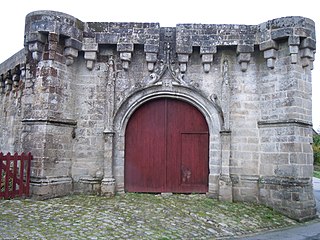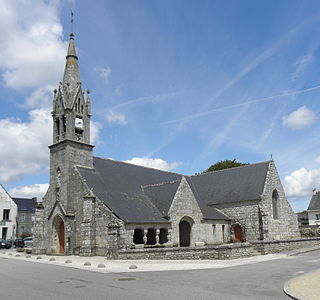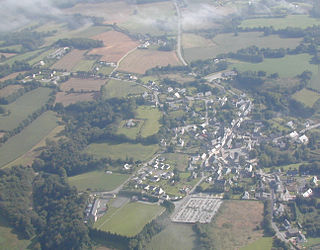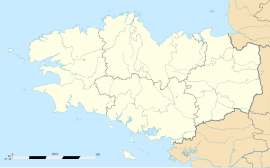
Plouay is a commune in the Morbihan department in Brittany in north-western France.

Guémené-sur-Scorff is a commune in the Morbihan department in Brittany in north-western France. Inhabitants of Guémené-sur-Scorff are called Guémenois.

Pontivy is a commune in the Morbihan department in Brittany in north-western France. It lies at the confluence of the river Blavet and the Canal de Nantes à Brest. Inhabitants of Pontivy are called Pontivyens in French.

Cléguer is a commune in the Morbihan department of Brittany in north-western France.

Cléguérec is a commune in the Morbihan department of Brittany in north-western France.

Le Croisty is a commune in the Morbihan department of Brittany in north-western France.

Gourin is a commune in the Morbihan département of Brittany in north-western France.

Grand-Champ is a commune in the Morbihan department of Brittany in north-western France.

Langonnet is a commune in the Morbihan department of Brittany in north-western France.

Lanvénégen is a commune in the Morbihan department of Brittany in north-western France.

Lignol is a commune in the Morbihan department of Brittany in north-western France.

Melrand is a commune in the Morbihan department of Brittany in north-western France.

Pénestin is a commune in the Morbihan department of Brittany in north-western France.

Ploërdut is a commune in the Morbihan department in Brittany in north-western France.

Pont-Scorff is a commune in the Morbihan department of Brittany in north-western France. It takes its name from the river Scorff, which flows through the town.

Priziac is a commune in the Morbihan department of Brittany in north-western France.

Quistinic is a commune in the Morbihan department of Brittany in north-western France. Its sister city is the rural village of Loughshinny, which is in County Dublin, Ireland.

Le Saint is a commune in the Morbihan department of Brittany in north-western France.

Guilligomarc'h is a commune in the Finistère department of Brittany in north-western France.

Plouescat is a commune in the Finistère department of Brittany in north-western France. It is a seaside resort, complete with a casino and a large camping and caravanning site, adjacent to its extensive beach of fine, powdery sand. The region is largely agricultural, specialising in artichokes, onions, cauliflowers and potatoes.



























